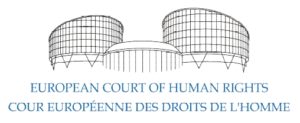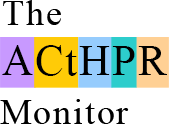One of this week’s contribution is a collaboration between William and Martin. William Hamilton Byrne is a PhD Fellow at iCourts, the Danish National Research Foundation’s Centre of Excellence for International Courts, University of Copenhagen. Martin Lolle Christensen is a PhD Fellow at the European University Institute, Florence.

The European Convention for the Protection of Human Rights and Fundamental Freedoms (hereinafter, ‘ECHR’) was adopted by the State parties of a newly founded international organization, the Council of Europe, on 4 November 1950. Described almost universally in terms of its successes, the European Court of Human Rights (hereinafter, the European Court) has grown from the humble origins of sporadic adjudication by the European Commission for Human Rights against a small number of Western European States to a complex bureaucracy of compulsory adjudication that covers the large part of geographical Europe, with over 10,000 issued judgments, and 4 new cases registered per day.
Since 1998, the European Court has been the centre of the European system for human rights protection as the adjudicator of rights claims under the Convention. The ECHR contains a structure and content that is not dissimilar to the African Charter. The ECHR (as amended by Protocol 11) is comprised of three parts. Articles 2-18 contain a list of rights and freedoms, supplemented by a number of protocols that provide for additional rights and freedoms. Articles 19-51 provide for the operation of the European Court, Articles 52-59 contain miscellaneous provisions.
SOURCES AND INTERPRETATION
The rights and freedoms contained in the ECHR are generally classified as civil and political rights. These include the classic fundamental freedoms, such as the right to life (Article 2), the prohibition of torture (Article 3) and the right to liberty and security (Article 5), as well as rights that have proven to be tremendously important in modern democratic societies, such as the right to privacy (Article 8). Unlike the African Charter, the ECHR does not provide for social, economic, or cultural rights, these are the subject matter of a separate treaties in the Council of Europe, such as the European Social Charter.
The Court has developed principles of interpretation that it applies to the ECHR. Firstly, the principle of effectiveness, by which ECHR rights are interpreted in a manner that renders their exercise ‘real and effective.’ Secondly, the ‘living instrument’ doctrine, by which the ECHR is interpreted in accordance with present standards, and relatedly, whether a ‘European Consensus’ exists on a matter in question. Finally, the ‘margin of appreciation,’ granting State Parties leeway in their implementation of the ECHR, which has become increasingly prominent in light of a greater emphasis on subsidiarity in recent years by which the Court affords some degree of leeway to States in their implementation of the rights and obligations that are contained in the Convention.
The Convention does not explicitly mention the sources of law to be applied by the Court in deciding a dispute under the terms of the treaty. Article 32 provides that ‘(t)he jurisdiction of the Court shall extend to all matters concerning the interpretation and application of the Convention and the Protocols…’. This is generally understood to mean that the primary source of law for the Court to apply is the treaty itself and its accompanying protocols. The Court thus makes reference to its own treaty in every single case, and also, in this respect, how it has previously been interpreted in its own case law. The Convention does include a ‘Most Favourable Treatment Clause’ in Article 53, which states that the convention cannot be interpreted to derogate or construed to avoid any other commitments to human rights that the member states is a part of, and so connects the protection in the ECHR to other relevant international human rights treaties. This clause is rarely used however.
It is not the convention itself but the aforementioned interpretive principles that the Court utilizes to refer to external sources. Through the principle of effectiveness and evolutive interpretation, the ECtHR may find inspiration in external sources of law and the practice of other international courts. Likewise, the general rule of interpretation in international law found in Vienna Convention on the Law of Treaties allows for the systemic integration of any relevant rule of international law applicable between the parties (VCLT art. 31.3.c.). This general rule of interpretation has often been acknowledged by the European Court. As the Court has said, the convention cannot be interpreted in a vacuum (Loizidou v. Turkey para. 43).
The Court has made reference to a number of different legal sources to interpret the content of the Convention. The circumstances in which the Court will draw on external legal materials remains disputed, for it has not expressed a clear methodology for doing so. Evidence suggests that the Court refers to ‘external sources’ in approximately 70% of its cases. In this context, the Court has relied on a variety of treaties and soft law instruments. However, it has been argued that circumstances in which it relies on external sources to expand the interpretation of the Convention are quite rare. Indeed, the evidence suggests that the Grand Chamber of the Court cites external sources to support, on average, only 1.5 arguments in a case. (See Dorothea Staes, When the European Court of Human Rights refers to external instruments: Mapping and justifications, PhD thesis, Université Libre de Bruxelles and Université Saint- Louis, 2017)
THE AFRICAN AND EUROPEAN SYSTEMS
The African Human Rights System under the auspices of the African Union is not a young system, with the Banjul Charter coming into effect in 1986, and the African Commission in 1986. However, the European Court did not start referring to the African system until this decade, although the practice of referring to a wide number of relevant international material started much earlier. To this date, the European Court has referred to the African Charter in 19 judgments and the African Commission’s reports and declarations in 26 judgments (including dissenting opinions). The references to the African Commission must be said to be of greater value for the development of trans-regional judicial dialogue, for through these references, the European Court recognizes not only a legal instrument, but also the legal reasoning of its African peers. The references are primarily to point to the existence of a broad consensus of a right beyond Europe, and thereby highlights the coherence of an international human rights jurisprudence. While the European Court has not yet cited the emerging jurisprudence of the African Court, there is still dialogue between the regional institutions, including visits and exchanges of judicial experiences, which is meant to foster judicial cooperation between the two courts. The institutions also exchange new legal materials on a formal basis, including recently issued case law.
Arguments for transnational judicial dialogue suggest that this is not a one-way street. That is, there is no reason why the African Court should also not refer to jurisprudence of the European Court when it seeks to interpret the African Charter in its own cases. After all, many of the provisions in the Charter are similarly worded to similar provisions in the ECHR. In fact, early evidence suggests that, of 62 finalized cases, the African Court has referred to the European Court in some 14 cases, primarily in judgments on the merits, and particularly when delving into new areas of jurisprudence. However, this is the subject of a separate blog post in this series: see here. Also see, for example, judicial dialogue organised by the African Court.
CONCLUSION
In conclusion, it can be said that it remains the case that the extent of cross-fertilization has thus far been hindered by the limited number of cases in the docket of the African Court. However, early signs suggest that the future looks promising. It is hoped that this process of trans-regional judicial dialogue by way of cross reference between cases will continue unabated. The African Court will undoubtedly be able to seek guidance from the vast body of ECHR jurisprudence dealing with substantially similar rights and freedoms that are contained in the African Charter. As the European Court enters into new territory not foreseen by the drafters of the ECHR, such as issues arising from people’s rights, it should have a lot to learn from the African Court too.
